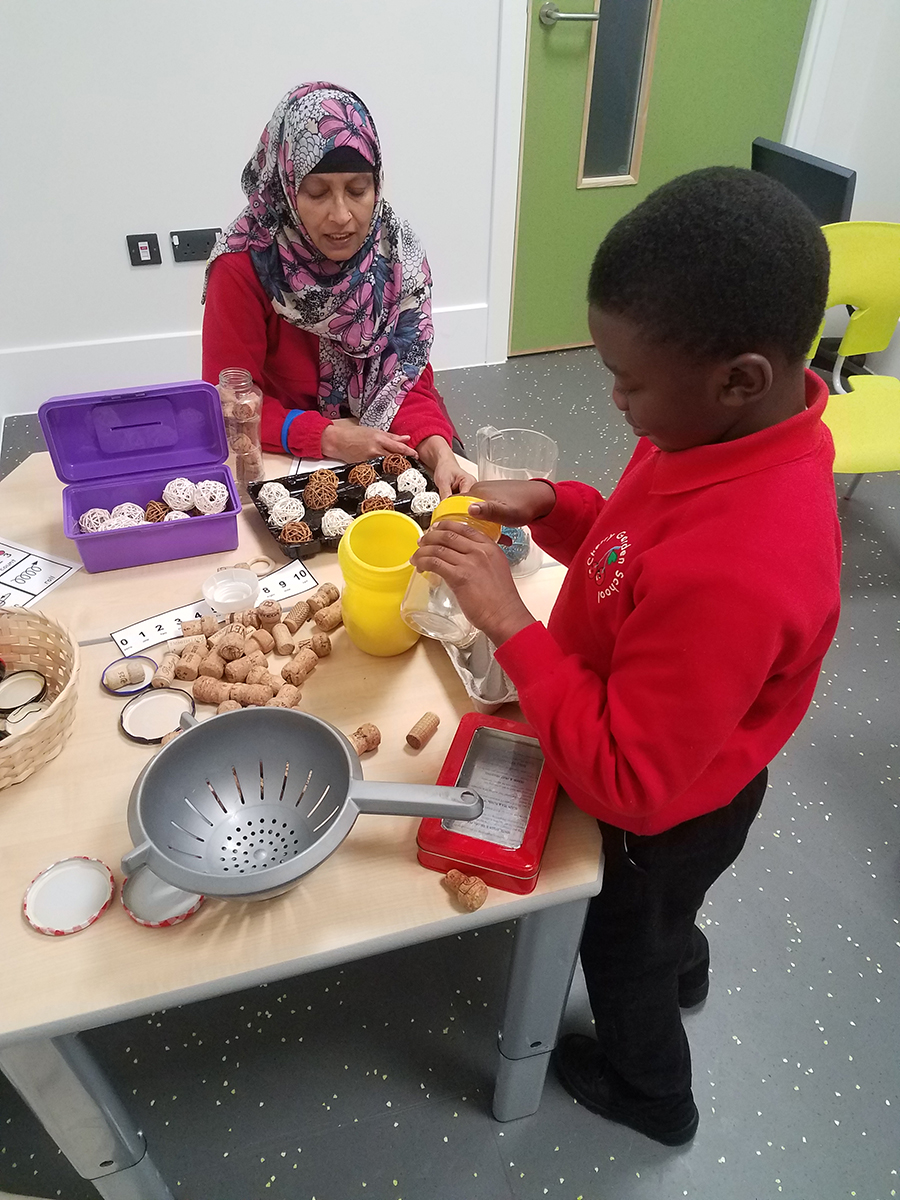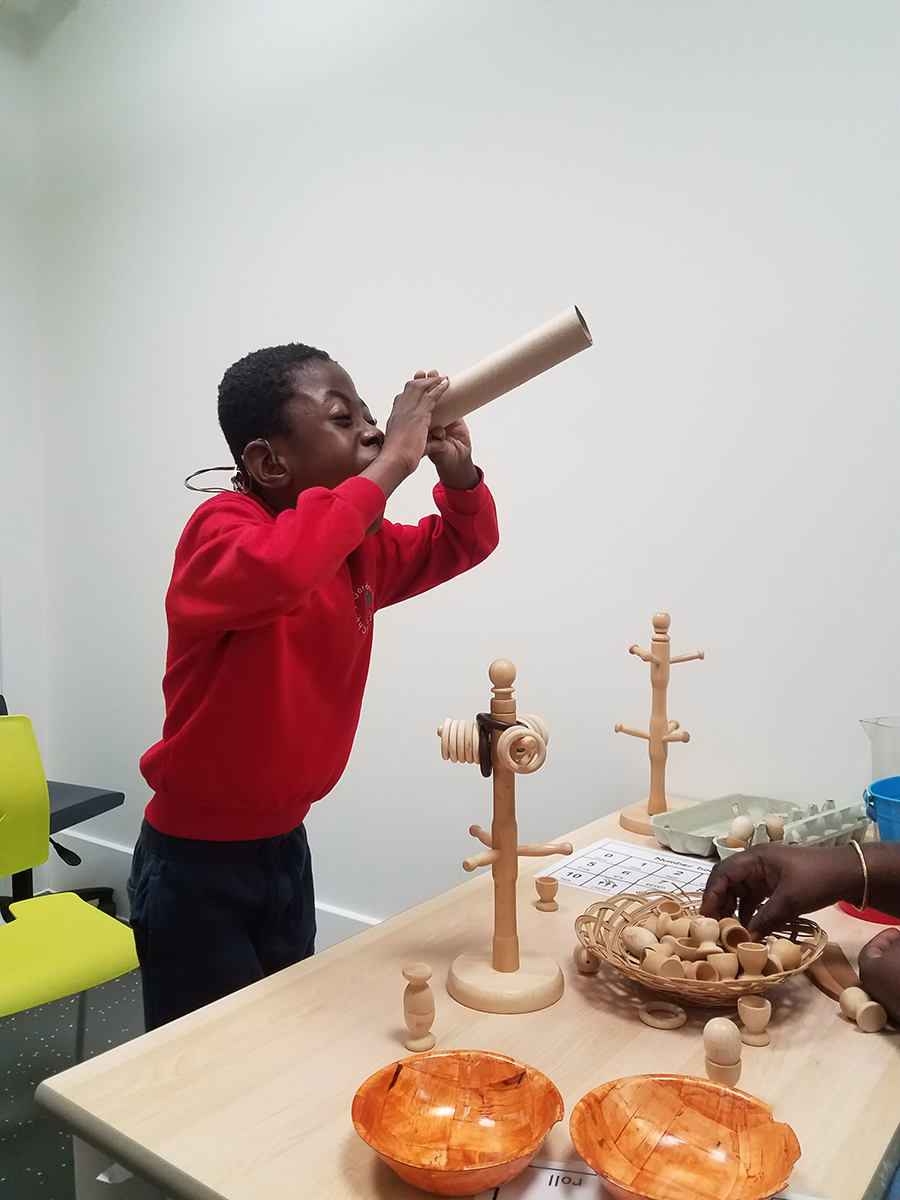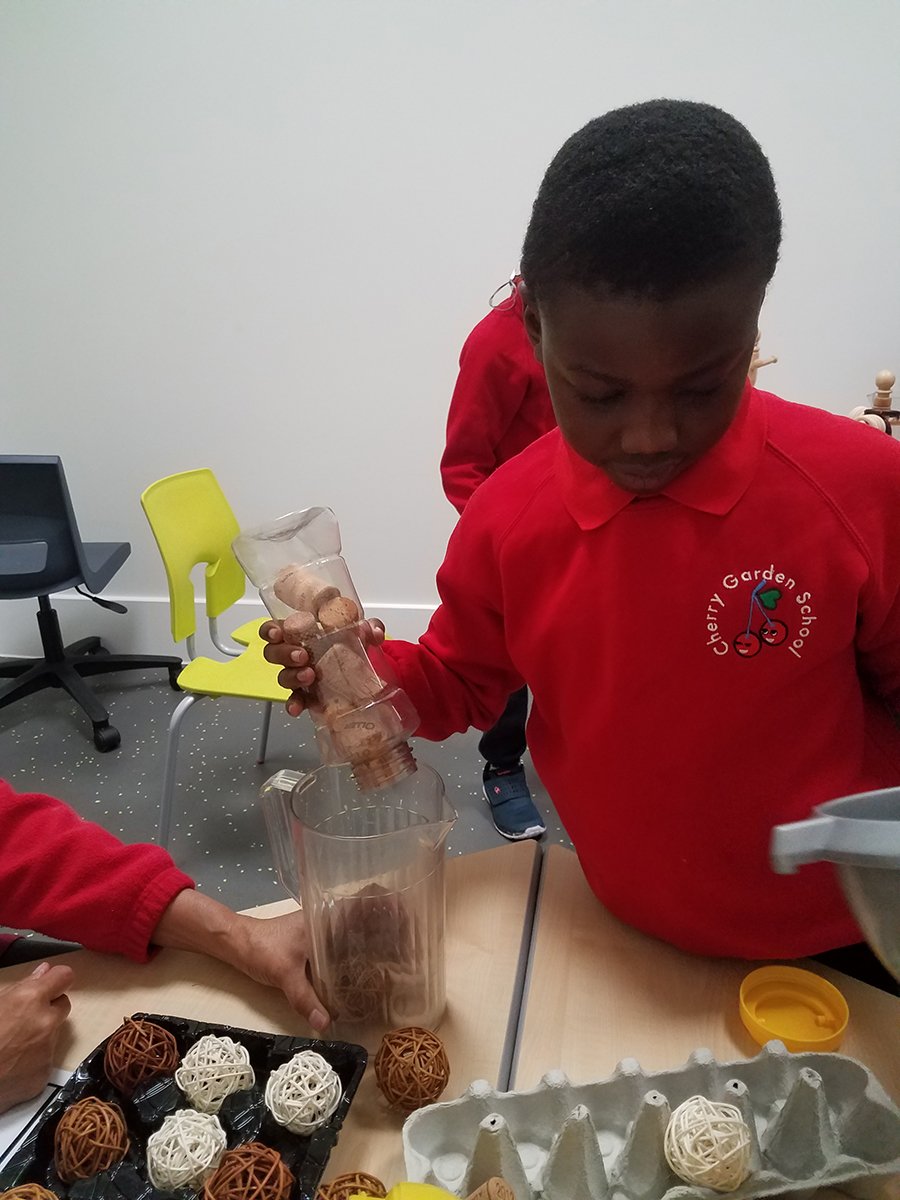What is Heuristic Play?
Heuristic play is a term developed by child psychologist Elinor Goldschmeid in the early 1980s. It describes the activity of babies and children as they play with and explore the properties of objects. Heuristic play is rooted in young children’s natural curiosity and can be used to encourage the exploration of many early maths concepts such as: number, shape, size movement and position.
Objects to use- Gathering objects
Heuristic play should include sets of the same item, preferably a large number of each item. These can be stored in bags or containers between sessions. It is useful to label the bags to help with sorting and tidying at the end of the sessions.
Object used can be everyday objects that you collect, or can be purpose bought. They should be made of natural materials wherever possible and include a range of shapes, sizes and textures.


Here is a list of some objects that we often use:
Corks
Metal jar lids
Pinecones
Wooden pegs
Curtain rings
Bottle tops
Cotton reels
Wooden disks
Bamboo pieces
Pebbles
As well as the objects, you will need some containers and larger objects to add to the creative possibilities, for example:
Cardboard tubes
Tins and metal bowls
A mug tree
Muffin tray
Heuristic play should be supervised by an adult as some items have the potential to be unsafe if not well supervised.
Play!
All the objects can be used for a wide range of mathematical opportunities as the children explore different actions such as: stacking, threading, rolling, making sounds, gathering, filling, dropping, balancing, knocking down and combining.
The objects provide sensory experiences, developing an understanding of texture, shape and size. Children will often repeat their favourite actions, making sounds as they drop items into tins or stacking to make tall towers. They will have lots of opportunity for developing their hand-eye coordination and fine motors skills as they play. In higher level Heuristic Play, children may start to count, order and sort items. Above all the session should be fun and creative, the only limit is your imagination!
The role of the adult: During a heuristic play session, it is important for the adult to observe the actions of the child to see what they are able to do and which actions they enjoy engaging in. As with all play activities, it is best to follow the lead of the child, adding to their ideas rather than trying to suggest your own. The adult can gently start to extend the play by modelling similar actions or adding an extra step to the action of the child; over time, the child may take an interest and join in with the adult’s modified actions.
Heuristic Play is also a fantastic opportunity for the adult to model key language by commenting on their own or the child’s actions using keywords, for example saying ‘In!’ every time a child drops an object into a tin and ‘Out!’ when they pour everything back out again. In this way, the child will develop their understanding of these mathematical words.


Tidy up!
At Cherry Garden, we implement Heuristic Play as part of our Maths sessions. At the end, it’s time to tidy up! Sometimes this can be a big job, but this is an important part of the children’s learning, as we can see them helping to pick up the objects to work on their motor skills, and some may start to sort and match the items, helping to put them in the correct bags.
Benefits
Elinor Goldschmeid, Heuristic Play developer, acknowledges the capacity of young children to pay attention, maintain concentration and be involved. Heuristic play gives children the opportunity to make their own discoveries in an environment where they may develop different ways of exploring properties of objects and be creative in the way they combine objects together. It is an effective way of encouraging children to explore artefacts from the world around them and to develop their thinking skills.
Resources:
This video gives you some examples of how we use Heuristic Play at Cherry Garden School, and how you could also use this at home.
References:
Goldschmied, E. 8: Jackson, S. (1994).
